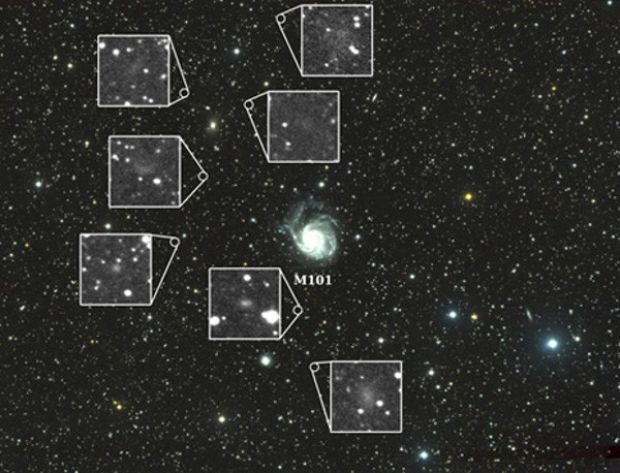A “homemade” telescope put together by brainiacs at Yale University in the United States proved a surprisingly efficient tool for space exploration when it helped researchers identify as many as seven previously unknown dwarf galaxies.
Interestingly enough, the astronomers were not even looking to make any major discoveries when they chanced to find the seven dwarf galaxies, whose approximate location to one another is detailed in the image below.
On the contrary, the Yale University researchers were simply spying on a spiral galaxy that sits fairly close to our Milky Way and that the scientific community calls M101. A photo of this galaxy is available above.
Scientists believe the only reason it took so long for these seven dwarf galaxies to be identified is because they are rather diffuse. Simply put, they are not bright enough to draw attention to themselves.
Now that researchers are aware of their existence, it is to be expected that investigations into the seven dwarf galaxies' makeup, location, and orbiting patterns will soon be carried out.
As detailed on Yale University's official website, the telescope that the researchers used to pin down these new galaxies comprises telephoto lenses that were stitched together. The lenses all sport a coating that suppresses internally scattered light.
“These are the same kind of lenses that are used in sporting events like the World Cup. We decided to point them upward instead,” researcher Pieter van Dokkum explains in a statement.

 14 DAY TRIAL //
14 DAY TRIAL // 

